4 April 1778 Saturday
Vases, Candelabra, Grave Stones, Sarcophagi. Tripods, Lamps and Ancient Ornaments volume II
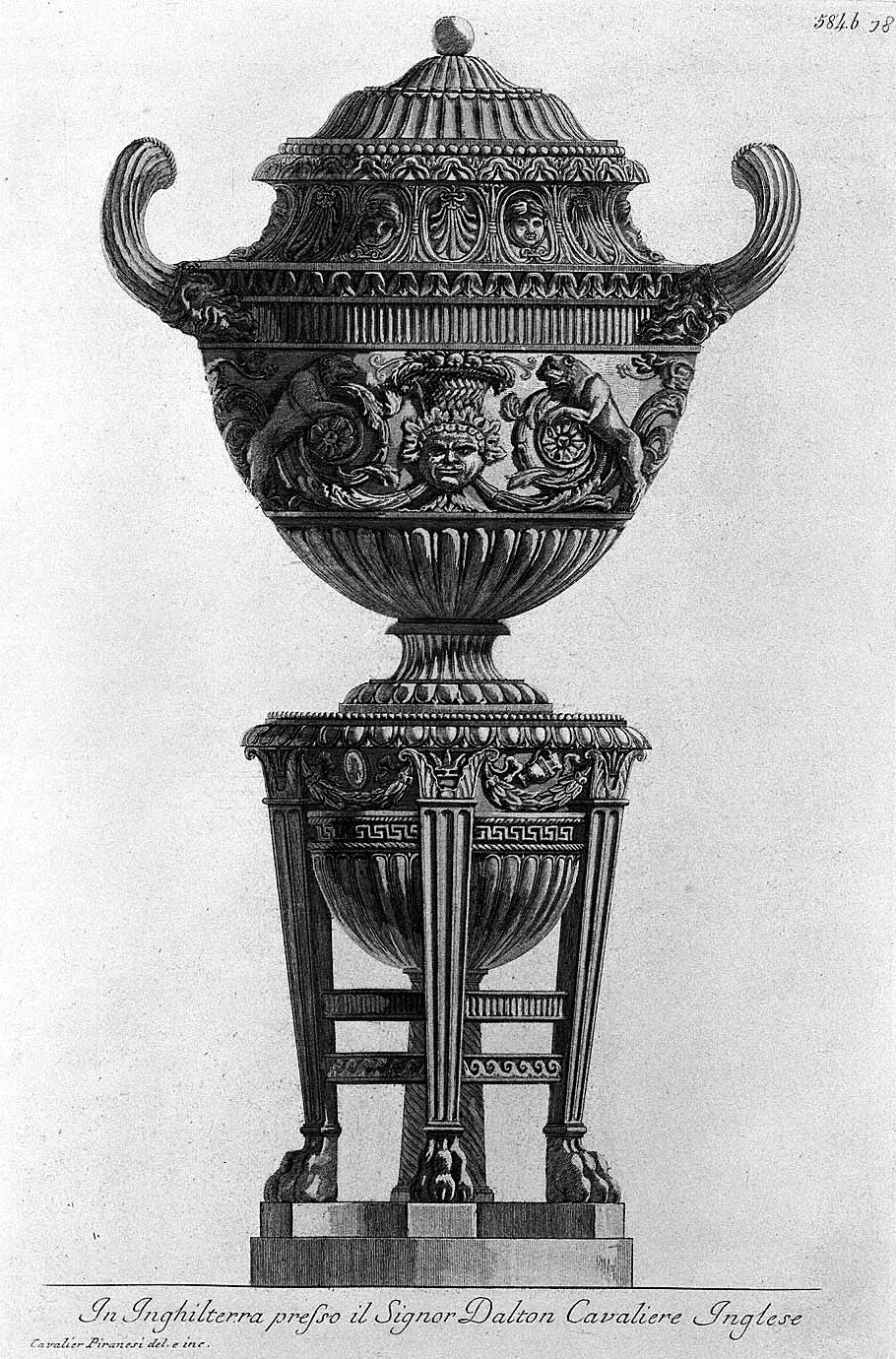
In England at Mr. Dalton English Knight
Cavalier Piranesi drawn and engraved
20-21 y.o. Francesco Piranesi 1779
Le Antichitą Romane

Invented and engraved by Francesco Piranesi in 1779.
Josephus Cades drew the face
4 April 1783
Francesco Piranesi obtained the post of art agent to Gustavus III thanks to the mediation of Fredenheim. The intense correspondence between these two had already started in 1782 and lasted until 1788 when Fredenheim went to Rome. See 17 February and 28 March.
45-46 y.o. Francesco Piranesi 1804
Calcography of the Piranesis
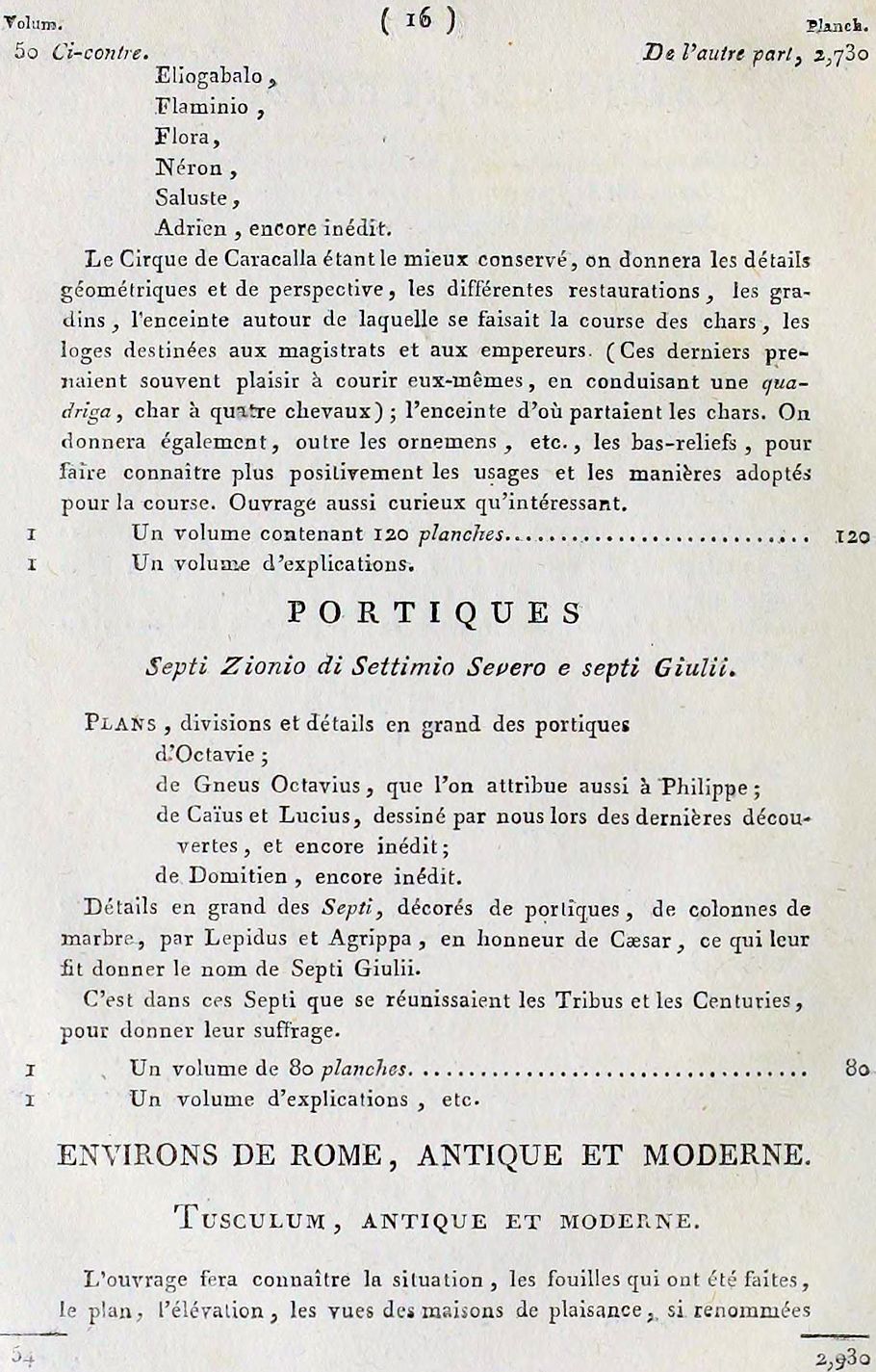
Eliogabalo,
Flaminius,
Flora,
Nero,
Sallust,
Hadrian, still unpublished.
The Circus of Caracalla being the best preserved, we will give the geometric and perspective details, the various restorations, the bleachers, the enclosure around which the chariot race took place, the boxes intended for the magistrates and the emperors. (The latter often took pleasure in racing themselves, driving a quarter riga, four-horse chariot); the enclosure from which the tanks left. Besides the ornaments, etc., the bas-reliefs will also be mentioned, in order to make known more positively the uses and the manners adopted for the race. Curious and interesting work.
A volume containing 120 plates
A volume of explanations.
PORTICOS
Septi Zionio di Settimio Severo and Septi Giulii
Plans, sections and large details of the porticoes
of Octavia;
of Gneus Octavius, who is also attributed to Philip;
of Caius and Lucius, drawn by us during the last discoveries, and still unpublished;
of Domitian, still unpublished.
Large details of the Septi, decorated with porticoes, marble columns, by Lepidus and Agrippa, in honor of Cęsar, which gave them the name of Septi Giulii.
It is in these Septi that the Tribes and the Centuries met to give their vote.
A volume of 80 plates
A volume of explanations, etc.
4 April 1812 Saturday
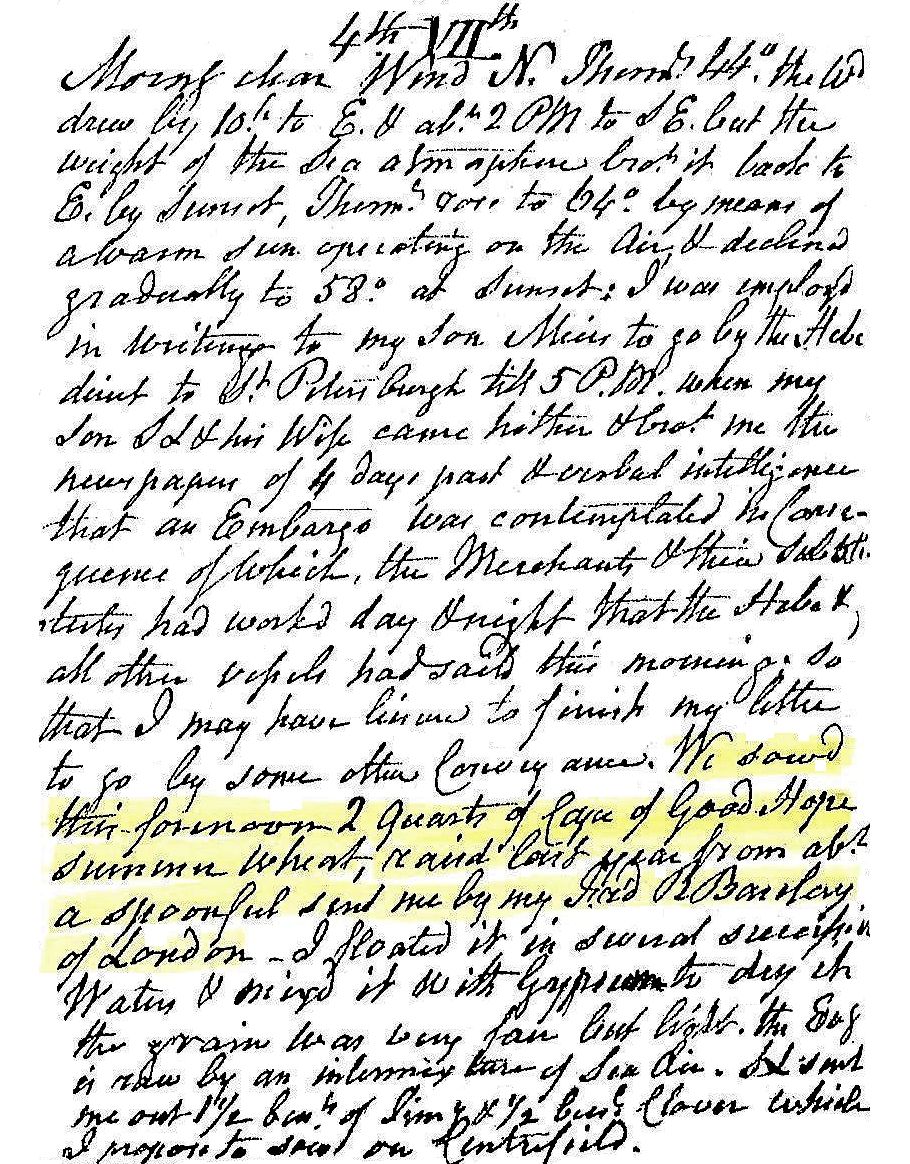
Morning clear, wind N. Therm. 44°. The wind drew by 10 o'clock to E and about 2 PM by SE but the weight of the sea atmosphere brought it back to E by sunset. Therm. rose to 64° by means of a warm sun operating on the air and declined gradually to 58° at sunset. I was employed in writing to my son Miers to go by the Hebe[?] direct to St. Petersburg till 5 PM when my son, SL and his wife came hither and brought me the newspapers of 4 days past and verbal intelligence that an embargo was contemplated in consequence of which the merchants and their substitutes[?] worked day and night that the Hebe and all other vessels had sailed this morning, so that I may have leisure to finish my letter to go by some other conveyance. We sowed this morning 2 quarts of Cape of Good Hope summer wheat raised last year from about a spoonful sent me by my friend R. Barclay of London. I floated it in several s........ of water and mixed it with gypsum to dry it. The grain was very fair but light. The evening is raw by an intermixture of sea air. SL sent me out 1 1/2 bushels[?] of ..... and 1/2 bushel[?] of clover which I propose to sow on centerfield.
4 April 2006
Re: Constantine and Christians
It is perhaps wrong to say that Constantine was influenced by Helena and Eutropia when it came to Christianity, but there is no question that Constantine acted in tandem with Helena and Eutropia when it came to manifesting Christian churches. Helena's work is relatively well known here, but Eutropia's work is often ignored. Here is a letter from Constantine to Eusebius (as a bishop in Palestine), which Eusebius includes within the Life of Constantine after recording the death of Helena:
VICTOR CONSTANTINUS, MAXIMUS AUGUSTUS, to Macarius, and the rest of the bishops in Palestine.
One benefit, and that of no ordinary importance, has been conferred on us by my truly pious mother-in-law, in that she has made known to us by letter that abandoned folly of impious men which has hitherto escaped detection by you: so that the criminal conduct thus overlooked may now through our means obtain fitting correction and remedy, necessary though tardy. For surely it is a grave impiety indeed, that holy places should be defiled by the stain of unhallowed impurities. What then is this, dearest brethren, which, though it has eluded your sagacity, she of whom I speak was impelled by a pious sense of duty to disclose?
That the Saviour appeared in this Place to Abraham. She assures me, then, that the place which takes its name from the oak of Mambre, where we find that Abraham dwelt, is defiled by certain of the slaves of superstition in every possible way. She declares that idols which should be utterly destroyed have been erected on the site of that tree; that an altar is near the spot; and that impure sacrifices are continually performed. Now since it is evident that these practices are equally inconsistent with the character of our times, and unworthy the sanctity of the place itself, I wish your Gravities to be informed that the illustrious Count Acacius, our friend, has received instructions by letter from me, to the effect that every idol which shall be found in the place above-mentioned shall immediately be consigned to the flames; that the altar be utterly demolished; and that if any one, after this our mandate, shall be guilty of impiety of any kind in this place, he shall be visited with condign punishment. The place itself we have directed to be adorned with an unpolluted structure, I mean a church; in order that it may become a fitting place of assembly for holy men. Meantime, should any breach of these our commands occur, it should be made known to our clemency without the least delay by letters from you, that we may direct the person detected to be dealt with, as a transgressor of the law, in the severest manner.
For you are not ignorant that the Supreme God first appeared to Abraham, and conversed with him, in that place. There it was that the observance of the Divine law first began; there first the Saviour himself, with the two angels, vouchsafed to Abraham a manifestation of his presence; there God first appeared to men; there he gave promise to Abraham concerning his future seed, and straightway fulfilled that promise; there he foretold that he should be the father of a multitude of nations.
For these reasons, it seems to me right that this place should not only be kept pure through your diligence from all defilement, but restored also to its pristine sanctity; that nothing hereafter may be done there except the performance of fitting service to him who is the Almighty God, and our Saviour, and Lord of all. And this service it is incumbent on you to care for with due attention, if your Gravities be willing (and of this I feel confident) to gratify my wishes, which are especially interested in the worship of God. May he preserve you, beloved brethren!"
[These passages are from www.newadvent.org and thus from an older translation.]
I think it is clearly implied that Constantine sooner trusts Eutropia than the Christian bishops, and, moreover, Eutropia provided Constantine with a further occasion to demonstrate his superiority over the bishops. What is unfortunate is that modern scholars cannot accept that Eutropia was still alive and still on good terms with Constantine after the deaths of Helena and (of course) Fausta.
I've said it here before, and I'll say it again: a lot of the conundrums of Helena cleared up once I stopped ignoring Eutropia.
To me, Constantine was a soldier first, a politician second and a Christian third. Helena, I see, as a great historical player, a great survivor and a great doer. And, I see Eutropia, because of her long Imperial life and vast experiences, as the person closest to Constantine who knew 'everything'--she knew the Empire and its many places and how it all worked (literally and symbolically), and she probably knew who owned what.
4 April 2017
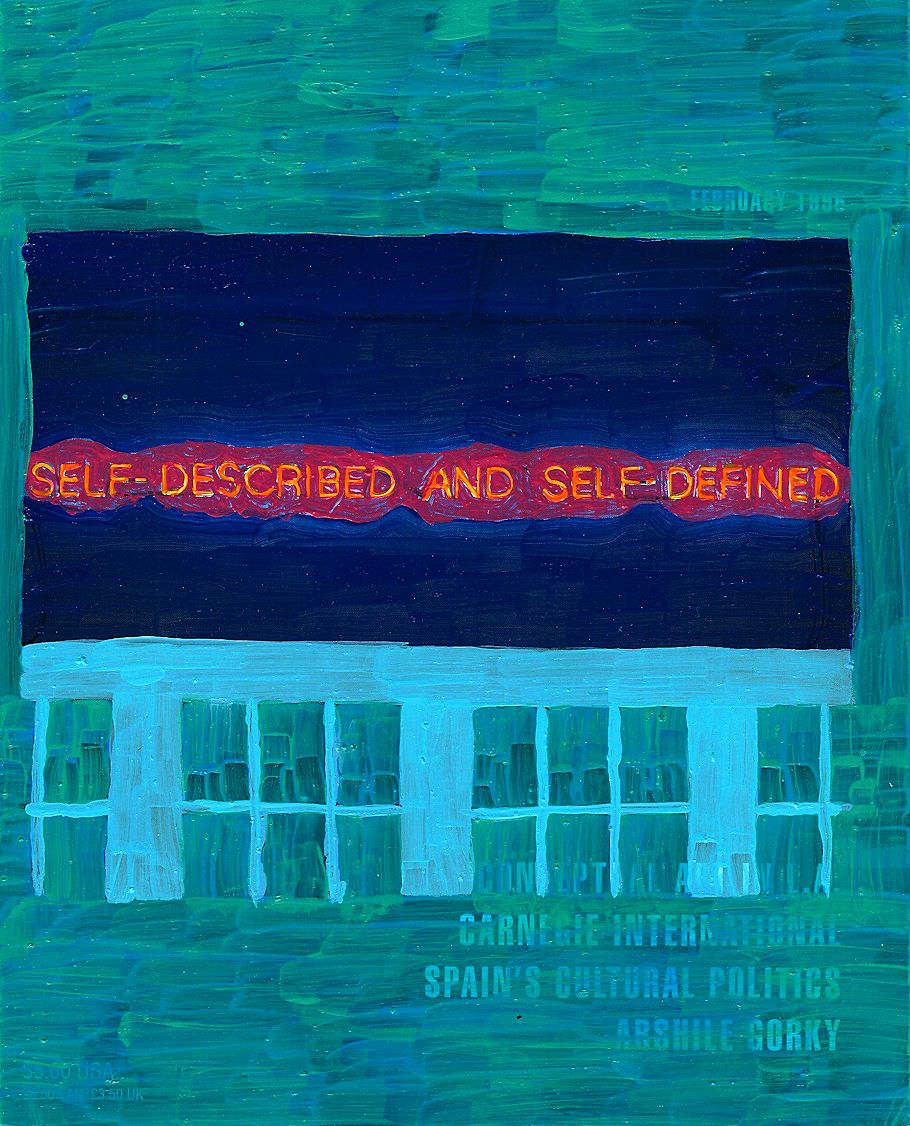
zero one three
4 April 2023 Tuesday
The fragment of the Ichnographia Campus Martius depicted within Francesco's 1779 tribute to his father (above) features the Templ. Jani and the Aedes Jani.
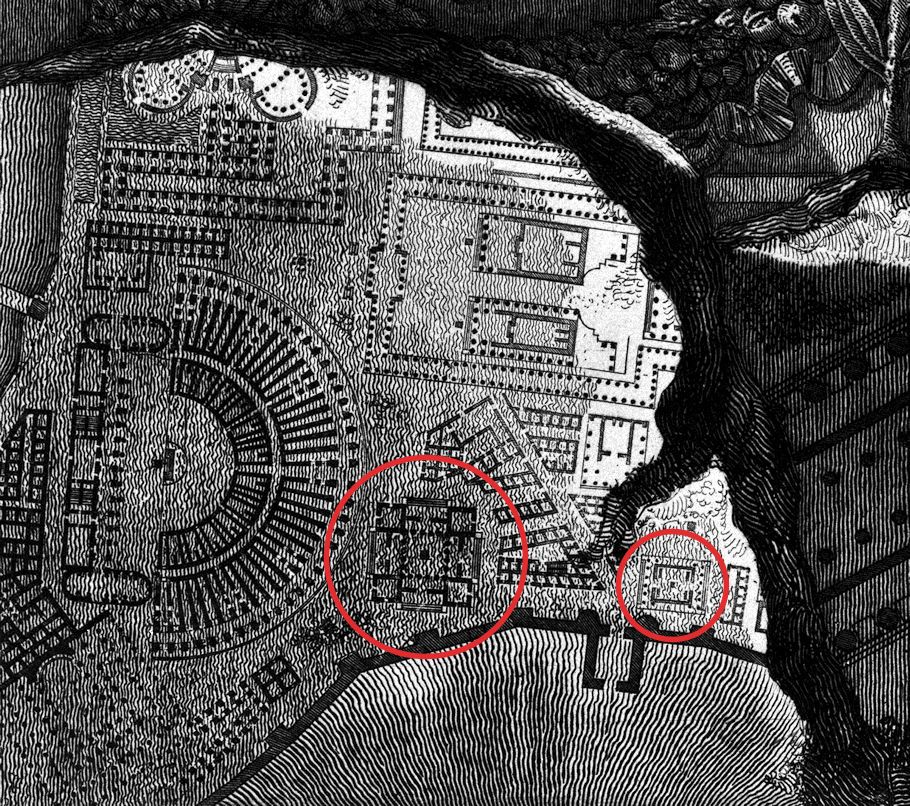
The larger temple plan also marks the location of S. Nicola in Carcere.
|